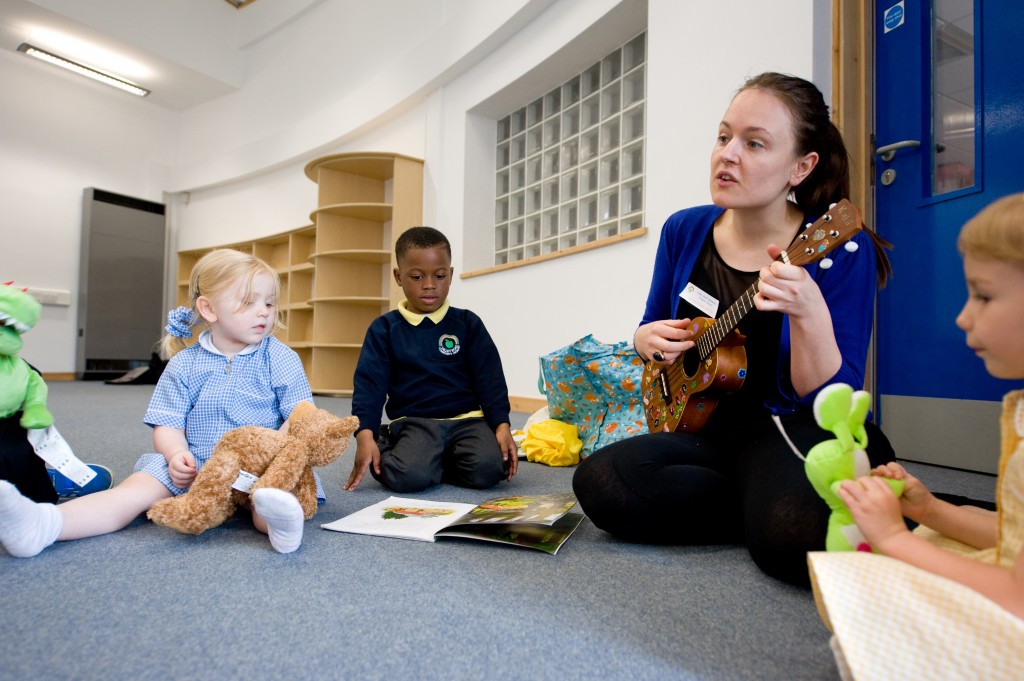


Running music activities within an Early Years setting is a very different experience to working with older children. Poco a Poco Creative Director, Bridie Jackson, has put together the following advice that you may find useful when planning sessions for children aged 3 – 5 years:
Session Length
The attention span of the group may be various, often making it hard to predict how long the session might last for, and there is little point in insisting the group continue once their concentration is lost. It’s likely the children will have a high level of free choice time in their nursery, so being asked to engage for 45 minutes may be difficult and unfamiliar. It’s therefore advisable to start with shorter sessions and build up to longer ones. Try also to keep any props as interesting as possible, colourful cloth and tactile toys etc. will help to hold the children’s attention.
A detailed session plan is advisable, but a certain level of flexibility within this is required. Focus can be sustained by constantly encouraging the group to volunteer their ideas and then praising their input. Try to keep a brisk pace and ensure activities are relatively brief.
Repetition
Unlike older children, rather than finding repetition dull Early Years children thrive on it, and you may notice their involvement and enthusiasm for activities and songs grow the more you implement them. The confidence developed through repetition is a good spring board for the extension activities outlined in each activity, which also help add variety.
Seating and Group Size
If room size allows, sit the children in a circle on the floor and join them as near to eye level as possible. This will aid social skills such as eye contact and physical awareness of others, which can subsequently improve co-operation and relationship building. Group size is also a key factor and a maximum of 10 children is advisable, as they are likely to require more attention than older children would, to keep them focused.
Vocal Range and Speed
Young children naturally have higher singing voices than adults, and a limited vocal range from around D (above middle C) to the B above that. This should be considered when pitching, as it’s likely that your singing voice will naturally sit lower than the bottom of this range. Bear in mind that children will always try to pitch match, so alter your voice accordingly if they sound like they are straining. It’s advised that men sing in their upper range.
Young children need time to process new information, particularly when songs are first introduced and they process both the language and the melody. Slowing the tempo allows them time to process all this information, and makes it easier for them to join in. Similarly, don’t be disheartened if the children don’t appear to be constantly engaged in the activities, it’s likely they are busy processing their experiences and are unable to react with the speed an older child would. In this situation it’s often revealed later by a parent or member of nursery staff that they have been singing the songs in full, and on repeat, at home or in nursery!
Fidgeting Can Help!
Although it’s good practise to encourage the group to be respectful of each other, it will take longer for children of this age to adapt their behaviour and the music leader should be tolerant of this. Examples may include not being able to sit still, preferring to lie on their tummies than be crossed legged, and needing to frequently move their hands or feet. These spontaneous movements are often helping the child to cope or concentrate within the group setting, so must be handled sensitively and with understanding, whilst not letting these behaviours dominate or disrupt.
